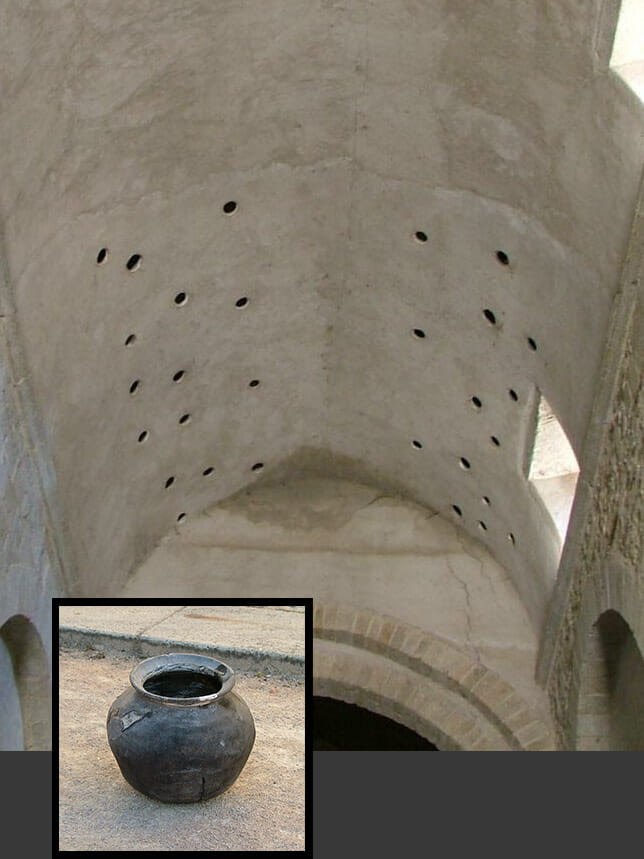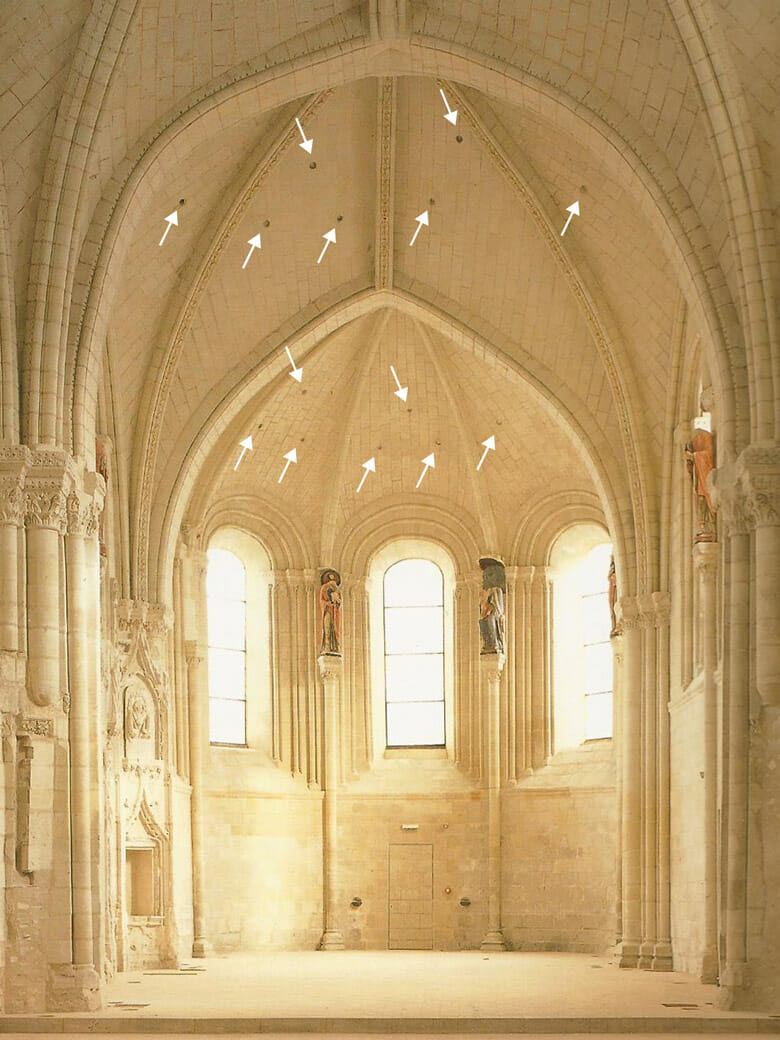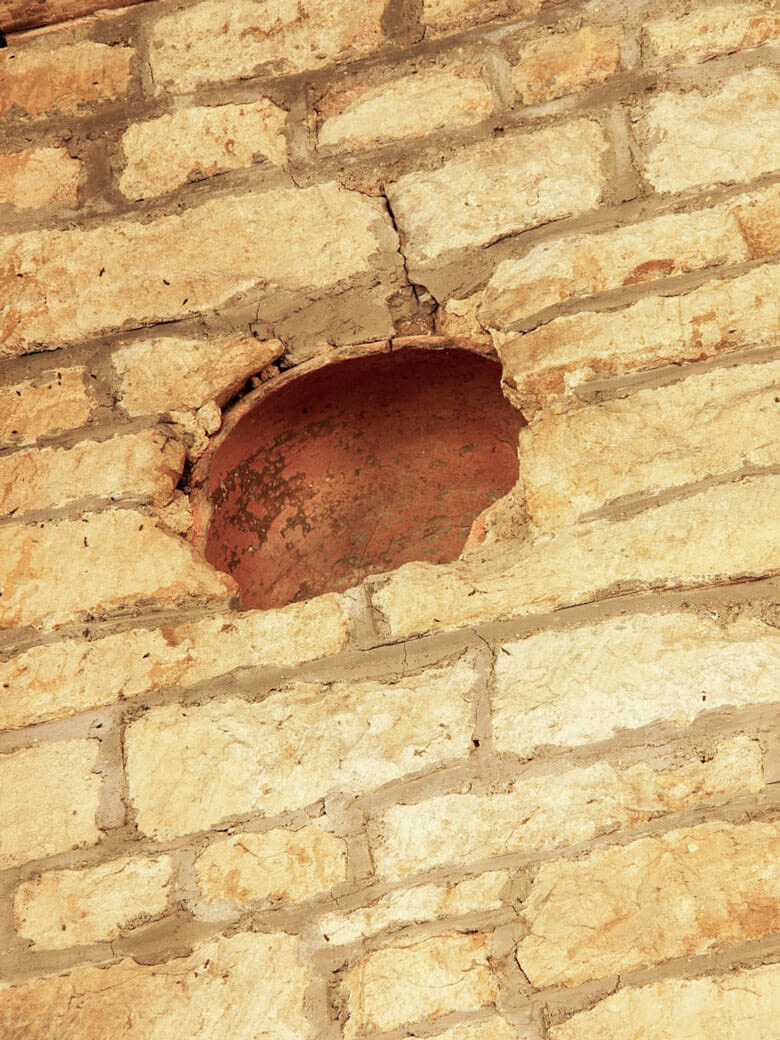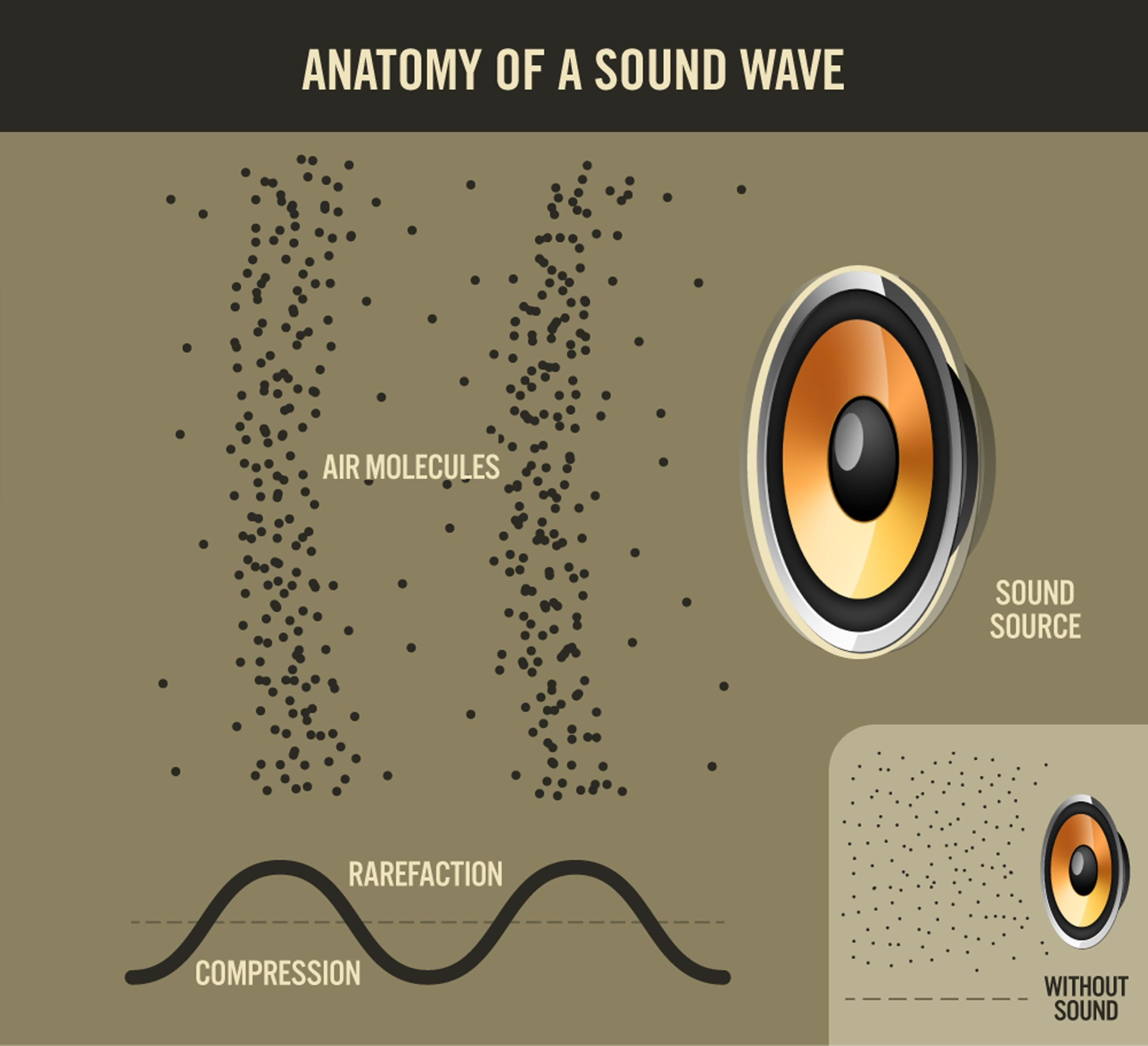SoundPly | The Science behind Micro-Perforations
The Science ofMICRO-PERFORATIONS
Although the materials and methods used to control the acoustics within an environment have advanced throughout the centuries, the basic principle of sound absorption has not changed — converting sound energy into heat energy.



Early Examples of Resonate Sound Absorption
For over 900 years, pots and jars embedded into the walls of European churches and cathedrals provided a measure of sound absorption for the highly reverberating environments.
Acoustical materials are usually constructed of soft, pliable, porous materials, and their visual appearance is secondary to their sound absorption ability. The appearance of acoustic absorbing materials within architectural and public spaces is often difficult to disguise, and the materials are either displayed openly, such as acoustic ceiling panels or sprayed cellulose acoustical insulation, or concealed behind fabric.
THE DISCOVERY OF
MICRO-PERFORATIONS
Since the late 1970s, a promising new method of sound absorption has emerged, centered around the use of numerous small, sub-millimeter holes that extend across and through the surface of a panel. These holes are referred to as “micro-perforations” and extend through the surface of a panel. The diameter of the micro-perforations are typically .6mm or smaller, and are numerous — up to 30,000 per square foot (300,000/m2).
The potential that micro-perforated panels offer to the acoustic industry has drawn the comparison to the impact of microchips on computer technology. Micro-perforated acoustic panels are the most revolutionary development in acoustics materials within the last 70 years, representing an entirely new approach to environmental acoustic control.
From appearances, micro-perforations wouldn’t appear to have much, if any, effect on the acoustical properties of a panel. In reality, the effect is profound. To understand how micro-perforations absorb sound, it helps to understand the structure and behavior of a sound wave.
A sound wave traveling through air consists of 2 “half-cycles.” The first half-cycle consists of energy in the form of compressed air generated from the vibration of an external source (i.e., speakers, vocal cords, hand clap). The displacement of air produced by the first half-cycle creates the second half-cycle, consisting of an equally proportionate area of less dense, or “rarified” air.
When a sound wave hits a hard surface, the air between the surface and the wave compresses, storing the energy of the sound wave’s first half-cycle. As the sound wave progresses into the second half-cycle, the compressed air expands away from the hard surface, efficiently reflecting the energy and continuing the sound wave’s movement with minimal energy loss.
THE BEHAVIOR OF
MICRO-PERFORATIONS
With the addition of micro-perforations to a hard surface, the entire process changes significantly. Micro-perforations act as escape ports for the compressed air. When a sound wave compresses air against a micro-perforated surface, the air reaches a point where it’s easier for it to enter the perforations than to continue compressing.

As the compressed air travels across the surface and into the micro-perforations, surface friction occurs between the solid surface and the boundary layer of air molecules. This friction converts the compressed molecules’ energy into surface heat which immediately dissipates into the surface and surrounding air.
During the sound wave’s second half-cycle, the air molecules reverse direction due to a switch in pressure. The air travels back through the micro-perforations expelling outwards, like a geyser, into the oncoming sound wave.
Studies have demonstrated that additional sound absorption is created by fluid friction converting sound energy into heat, which takes place during the second half-cycle. Fluid friction occurs when ejected air molecules and the compressed air molecules of the approaching sound wave collide. Depending on the quality and dimensions of the micro-perforation, the fluid friction can deplete a significant amount of energy from the sound wave.